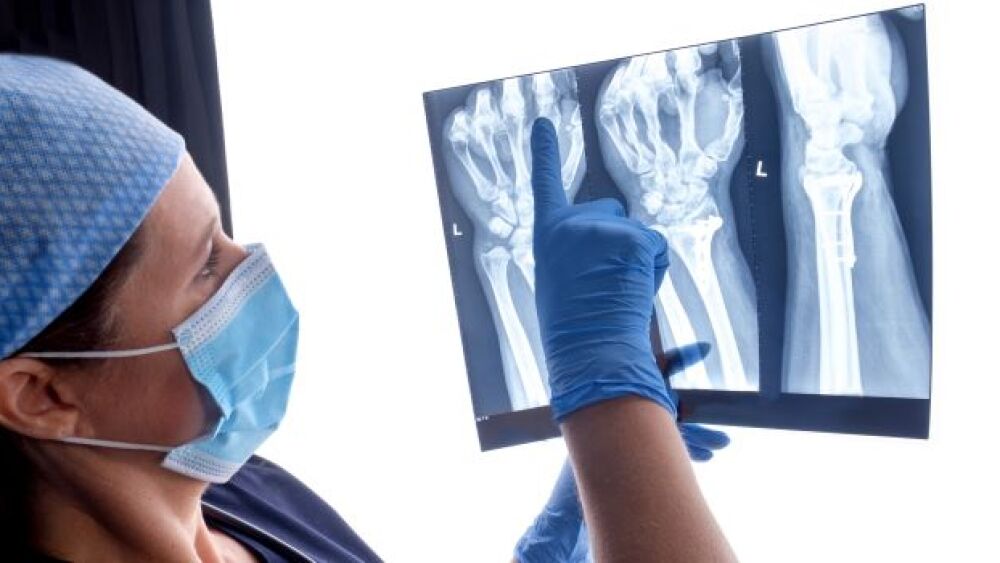As a result of this new data, the company “has improved the statistical analysis of the ALLOB Phase IIb study.” The changes should speed up the overall recruitment and study.
Bone Therapeutics may have finally caught a break. The Belgium-based company announced plans Friday to amend the statistical analysis and protocols for its ongoing Phase IIb trial of ALLOB, the allogeneic bone cell therapy it is developing to treat complex fractures. The therapy is designed to accelerate bone regeneration. It is also planning to run another controlled Phase IIb trial in tibial fractures.
Bone said that recently published medical data has supplied new information on the timing and dynamics of radiological evidence of bone fracture resolution. As a result of this new data, the company “has improved the statistical analysis of the ALLOB Phase IIb study. The updated analysis will provide an optimal radiological assessment of the acceleration of bone formation at three months following an intra-fracture administration of ALLOB, compared to standard practice alone.”
The updated statistical analysis will shift one of the current secondary endpoints to a primary endpoint. That’s likely to have a limited impact on the study protocol. The changes also allow a decrease of about 20% of the required patient numbers in the trial from 178 to 132 while maintaining the same statistical power, which should speed up the overall recruitment and study.
Bone said the updated data analysis should enable the definition of clinical trial objectives and endpoints in the measurement of fracture healing in any other studies, particularly the expected confirmatory Phase III trial in fractures and in studies for bone regeneration in other clinical indications.
As a result, the company plans an interim analysis based on the assessment of radiological data on about 66 evaluable patients three months after dosing. This will provide an opportunity to evaluate the efficacy of the therapy and hopefully hit a relevant clinical milestone earlier.
“Bone Therapeutics’ ALLOB represents a significant opportunity for clinical unmet medical needs in bone regeneration, namely difficult tibial fractures,” Dr. Anne Leselbaum, M.D., the company’s chief medical officer said. “These affect more than 300,000 patients per year in the U.S. and EU alone and can have a significant impact to (sic) the lives of those affected.”
Leselbaum continued, “The improved statistical analysis derived from emerging clinical data, will more precisely document the potential benefit of ALLOB over standard practice alone in difficult tibial fractures and could become a reference for future clinical trial objectives and endpoints. The current operational focus of Bone Therapeutics on the conduct of the study aims at ensuring the delivery of topline data as scheduled by the first half of 2023. With the inclusion of the interim analysis, we gain an opportunity to evaluate the efficacy of ALLOB at a slightly earlier time in 2023 and to potentially advance its development to the next stage.”
The company plans to submit its amendments for the statistical analysis and the planned interim analysis to the relevant regulators. It does not expect it will have a major change on the overall timing of the Phase IIb trial.
Accelerated Regeneration Mechanism
When a bone breaks, cells around the site of the fracture regenerate and remodel the bone. Bone Therapeutics’ technology collects cells from the bone marrow of healthy donors, separates the mesenchymal stromal cells, which can differentiate into bone-forming cells, then engineers them so they differentiate into cells able to accelerate bone growth immediately. In May, Dr. Miguel Forte, M.D., Ph.D., CEO of Bone, told BioSpace the new cells “are conditioned to produce bone so they hit the ground running. When they are applied to bone, they know what to do.”
In March, the company slashed through its C-suite like a bone saw, announcing that over the next several months, executives including Forte, chief scientific officer Tony Ting, chief business officer Stefanos Theoharis and chief financial officer Lieve Creten, would be leaving the company. Forte is staying on through the transition. All non-executive board members suspended their compensation for the first quarter at least.
The company appears to be placing all of its hopes and resources in ALLOB, especially after JTA-004, a bone treatment for osteoarthritis pain in the knee, failed in a Phase III trial in August 2021.





